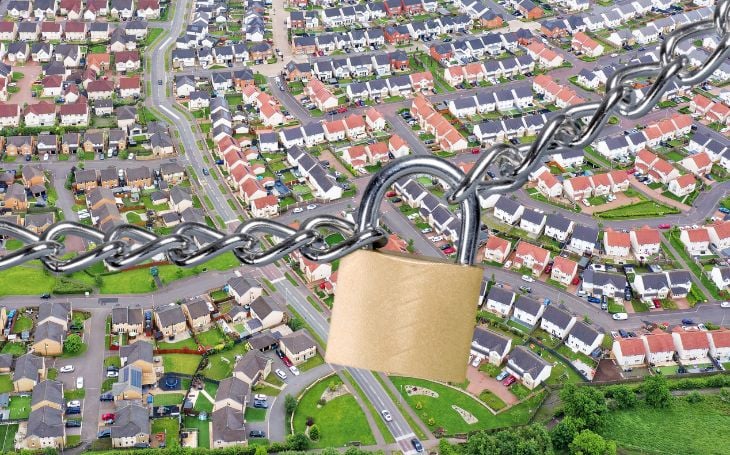 This month’s economic and property market data offers a broadly positive outlook across much of the UK – though there’s still room for improvement, and some of that may arrive as early as 7th August if the Bank of England’s Monetary Policy Committee decides to cut the Bank Base Rate to 4%.
This month’s economic and property market data offers a broadly positive outlook across much of the UK – though there’s still room for improvement, and some of that may arrive as early as 7th August if the Bank of England’s Monetary Policy Committee decides to cut the Bank Base Rate to 4%.
A key obstacle to unlocking the full potential of the property market remains inflation, which continues to prove stubborn. Currently sitting at 3.4% – well above the Bank of England’s 2% target – inflation remains “sticky,” making further rate cuts in the near term less likely unless we see clearer signs of it easing.
However, Capital Economics, one of the best inflation and interest rate forecasters, in my opinion, are more buoyant lower interest rates are on their way due to the government’s increase in employers’ costs:
“The falls in employment triggered by the Chancellor’s rises in National Insurance Contributions for employers and the minimum wage have increased our confidence that it is only a matter of time before wage growth and CPI inflation slow to rates consistent with the 2.0% inflation target. As a result, we think the Bank of England will cut interest rates from 4.25% now to 3.00%, which would take rates below the low of 3.50% priced into the financial markets.”
The Bank Rate will fall from 4.25% now to 3.00% next year, rather than to the low of 3.50%.”
From a housing perspective, they explain: “Although the recent soft patch in the housing market is coming to an end, the stuttering jobs market and softening outlook for wage growth mean house prices will probably rise by only 2.0% in the year to Q4 2025. But our view that the Bank Rate will fall from 4.25% now to 3.00% next year, rather than to the low of 3.50% priced into the financial markets, implies a bigger decline in mortgage rates will allow prices in the year to Q4 to rise by an above-consensus 5.0% in 2026 and by 3.5% in 2027.”
So despite the ‘mixed bag’ of economic indicators, transactions in the property market remain buoyant versus last year and prices, apart from some places such as London, continue to see growth nominally, while real growth is, in reality, being slowly eroded due to inflation.
Latest headlines and reports from the property price indices agree that the market is turning a corner and that we will see prices and transactions picking up in the second half of the year.

Property price and market indices headlines
New sellers lower prices in June, encouraging more to buy
“New seller asking prices drop by 0.3% (-£1,277) this month to £378,240. This is an unusual dip for June, as new sellers lower their price expectations amid decade-high competition to secure buyers.”
Sales market activity appears to stabilise, with near-term expectations for sales volumes turning marginally positive
“House prices still display a flat/marginally negative trend at the aggregate level.”
Annual house price growth softens in June
“Annual rate of house price growth slowed to 2.1% in June, from 3.5% in May.”
House prices hold steady as market activity picks up pace
“House price growth flat in June at 0.0% vs dip of -0.3% in May.”
Market to strengthen through second half of year
“Market set to improve with easing of affordability rules and lower interest rates.”
Sales remain strong but house price inflation slows
“UK house price inflation slows to 1.4% as 14% more homes for sale boosts buyer choice and limits price growth.”
Summary of the insights from this month’s indices
– Some segments of the market are performing more strongly than others, with affordability and supply levels key.
– The higher-priced southern regions and the capital have seen larger price drops this month, being more affected by higher stamp duty charges, and seeing greater increases in available homes for sale.
– The softening in price growth may reflect weaker demand following the increase in stamp duty at the start of April. Nevertheless, we still expect activity to pick up as the summer progresses, despite ongoing economic uncertainties in the global economy, since underlying conditions for potential homebuyers in the UK remain supportive.
– Average property price now £296,665 compared to £296,782 last month.
– Annual rate of growth edges down to +2.5% from +2.6 in May.
– First-time buyer numbers have returned to pre-stamp duty change levels.
– The housing market showed signs of stabilising in June, with average prices in England and Wales holding steady at just under £358,000. This suggests the recent period of modest price decline may be ending.
– Stamp duty effects start to unwind in England.
– Stabilising London prices help underpin wider England & Wales picture.
– Sales activity continues to run at the fastest rate for 4 years, with more homes for sale meaning more buyers in the market.
– House price inflation is higher in more affordable markets.
– Modest price falls in markets with average values over £500,000.

